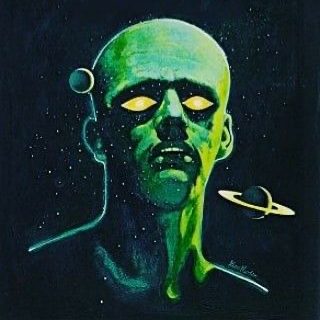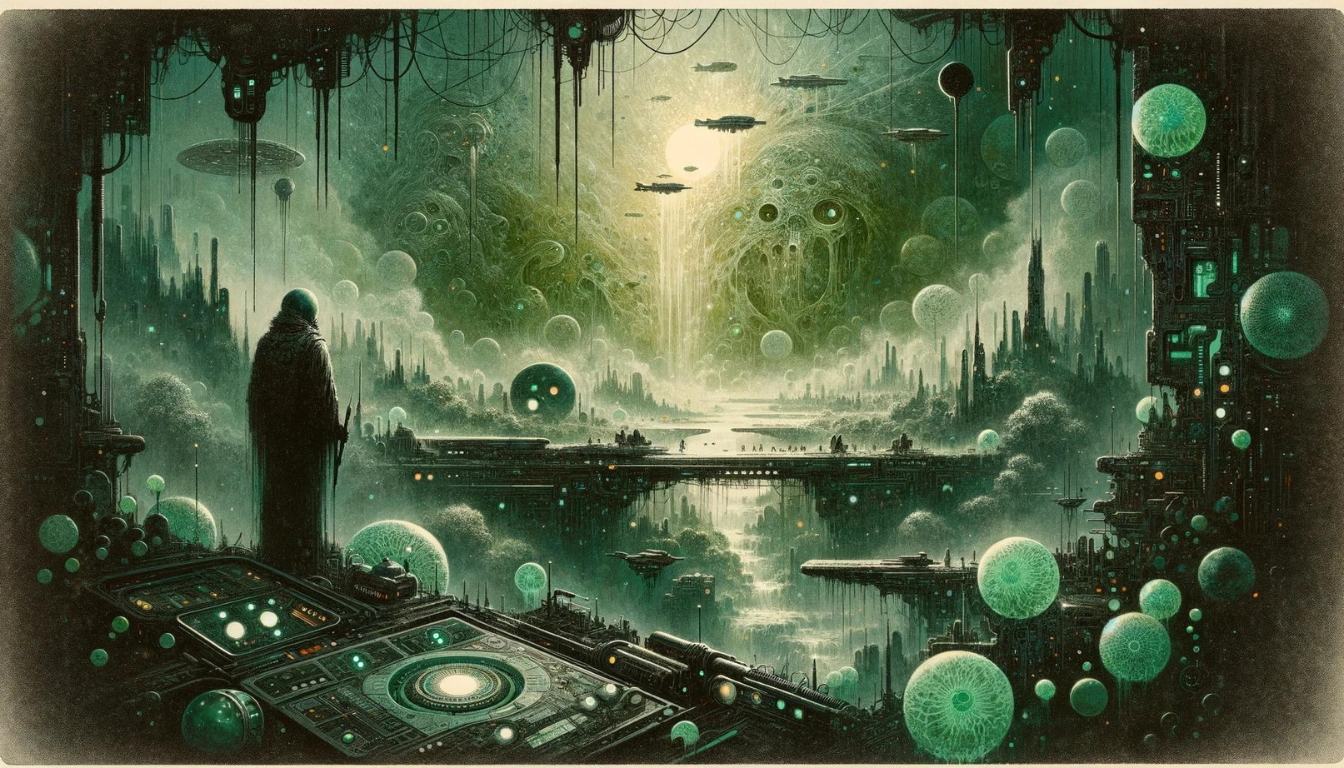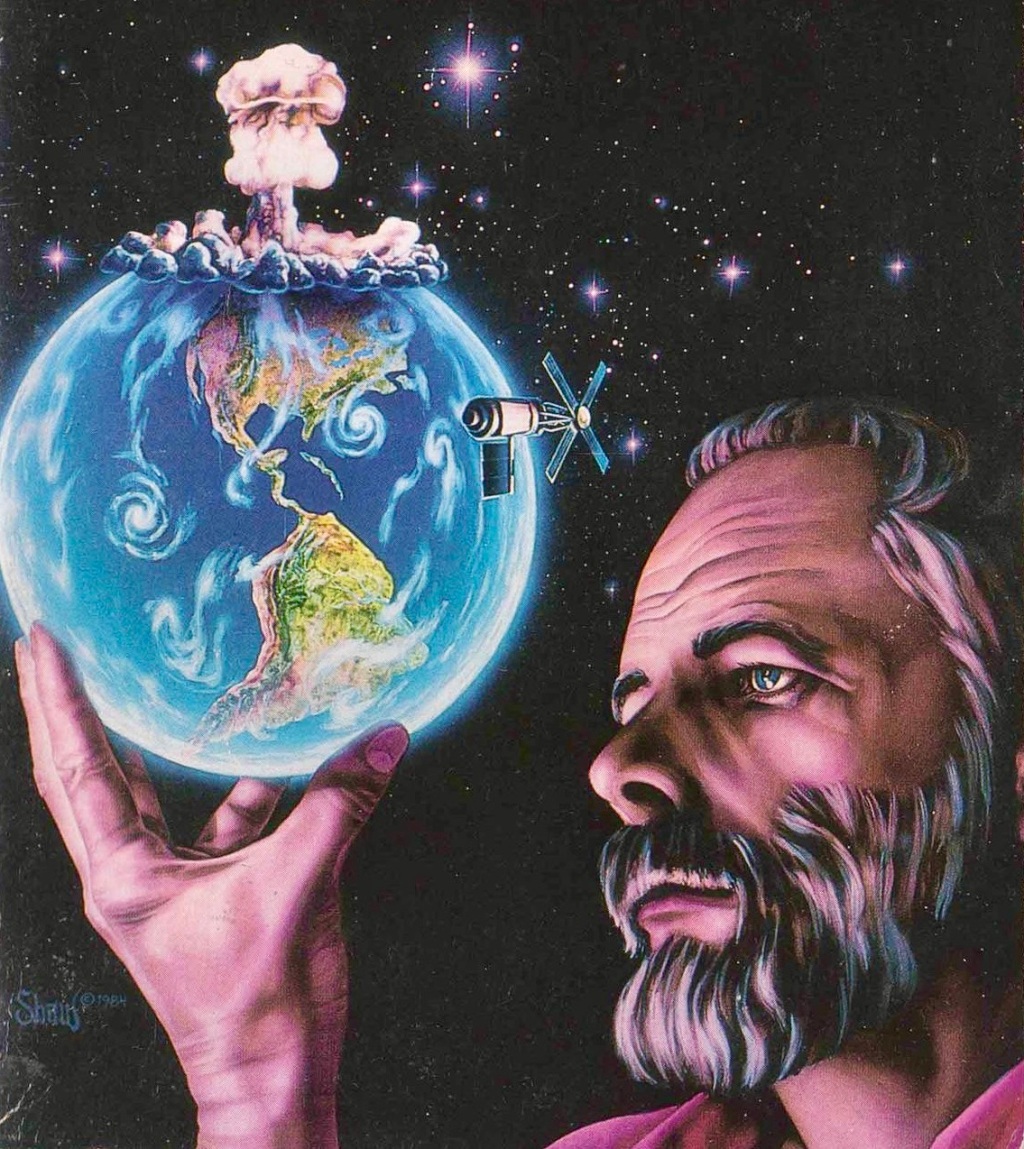Ah, Philip K. Dick – the man, the myth, the weaver of realities so intricate, you’d think he was knitting with spacetime itself. His tales? A smorgasbord of speculative sci-fi that delves deep into the rabbit holes of existence, consciousness, and what it means to really be. But what happens when Hollywood decides to take these cerebral narratives and plant them squarely in front of our eyeballs? Magic, mayhem, and a whole lot of “Wait, what?”

So in this post, we’ll be looking at how filmmakers tried to make the impossible possible by adapting Dick… with a modicum of success most of the time, but also a bit of abject failure to heighten the drama.
Blade Runner: More Than Just Rain and Neon

Let’s kick off with “Blade Runner,” shall we? Based on Dick’s “Do Androids Dream of Electric Sheep?”, this Ridley Scott masterpiece did more than just introduce the world to Harrison Ford’s trench coat swagger. It painted a dystopian future so visually arresting, it became the gold standard for sci-fi aesthetics. But here’s the kicker: the film is a visual feast of neon-drenched streets and existential dread, while the book dives deeper into what it means to feel empathy.

Scott’s vision gives us a world where rain is perpetual, and the atmosphere is as thick with foreboding as it is with pollution. The challenge? Condensing Dick’s multifaceted narrative into a two-hour visual odyssey. Liberties were taken, yes, but the essence? Captured with the finesse of a replicant passing the Voight-Kampff test.
Total Recall: A Vacation from Reality

Next up, “Total Recall.” The original 1990 film took Dick’s short story “We Can Remember It for You Wholesale” and pumped it full of steroids. Literally. Arnold Schwarzenegger stars in this roller-coaster ride that blurs the line between memory and reality, leaving us to wonder: “Is this the real life? Is this just fantasy?” (Apologies to Queen for repurposing their lyrics).

The story’s core question – what if you could implant memories of a vacation you never had? – becomes a full-blown identity crisis with Mars colonies, mutant rebellions, and an eyeball-popping amount of action. The challenge here? Escalating a contemplative concept into a blockbuster spectacle without losing the philosophical undertones. Did they succeed? As long as you don’t mind your existential dilemmas served with a side of Schwarzenegger one-liners, absolutely.
The Man in the High Castle: A World of “What Ifs”

And then there’s “The Man in the High Castle.” This Amazon series took Dick’s alternate history novel and ran with it, all the way into four seasons of “What if the Axis powers won World War II?” This adaptation expands on Dick’s vision, exploring a divided America where Japanese and Nazi rule have shaped a chillingly plausible dystopia.

The challenge here was monumental: visualizing a world that never was but could have been. It’s a balancing act of historical accuracy, speculative fiction, and the intricate weaving of individual stories against a backdrop of oppression and resistance. The result? A haunting, meticulously crafted world that serves as a mirror to our own, reflecting the dangers of unchecked power and the resilience of the human spirit.

The Visual Alchemy of Adapting Dick
Adapting Philip K. Dick’s work is no small feat. It’s about capturing the essence of his mind-bending narratives – the paranoia, the existential angst, the questioning of reality – and translating that into something visually tangible. It requires a delicate alchemy of respecting the source material while also embracing the medium’s strengths. Liberties? Taken. Challenges? Overcome. The unseen? Visualized with a fervor that would make Dick nod in approval (or raise an eyebrow in perplexed curiosity).

So, dear reader, next time you find yourself lost in the depths of a Dick adaptation, remember: you’re not just watching a film or series. You’re witnessing the transformation of complex ideas into visual poetry, a dance of light and shadow that brings the unseen into vivid relief. And isn’t that the true magic of cinema?
Subscribe below for more interdimensional musings and celluloid dreams, and remember – in the world of Philip K. Dick adaptations, you can’t unsee the unseeable once it’s been vivisected and reassembled… or can you?
I’d love to hear your thoughts on the topic. Comments are always welcome!








Leave a comment